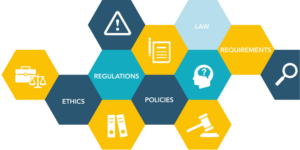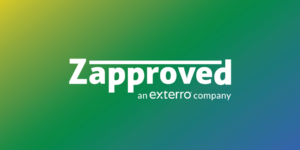
Building a More Efficient Review Process
What is Ediscovery Data Processing and Culling?
During the ediscovery process, potentially relevant electronically stored information (ESI) is identified and collected. After this process, in-house teams need to turn that ESI into a usable format for the review stage of a matter. In addition, whether you’re conducting review in-house or leveraging outside counsel for higher complexity or higher risk matters, the overall collected data volume needs to be culled down to a usable size.
Narrowing down large data sets to the most relevant subset gives you more control over the scope of your review project, and therefore, your time and cost. Through the use of processing and culling, in-house legal teams can make informed decisions about whether to involve outside counsel/vendors or complete the review and production of the document set in-house.
Responding to your ediscovery obligations is all about effectively and efficiently culling your data to separate the wheat (non-duplicative and non-privileged documents that are responsive to a discovery request) from the chaff (everything else). Earlier culling — preserving in place, collecting only what is needed, and processing and culling internally — saves costs by limiting the amount of data for review. But you can continue your cost-saving measures throughout the review process as well by utilizing more efficient review protocols and document review software.
The Advantages of In-House Culling and Processing
Bringing ediscovery capabilities in-house is a common tactic for organizations that seek to gain control over their budgets and reduce their costs. Generally, the first place to invest is in managing the legal hold process. Investing in collection capabilities for common data types and storage repositories can also help reduce cost, especially when coupled with the right technologies and tools.
The cost of ediscovery is skyrocketing as data volumes and complexity continue to expand. At the same time, corporate legal teams are frequently asked to do more with less while taking on additional responsibilities.
But for real cost reduction, consider performing initial culling in house, such as a simple cull by file type and date range, email domain, or duplicate status or something more substantial.
Narrowing down large data sets to the most relevant subset gives you more control over the scope of your review project, and therefore, your time and cost. Through the use of processing and culling, in-house legal teams can make informed decisions about whether to involve outside counsel/vendors or complete the review and production of the document set in-house.
Plus, processing data in house instead of sending your data to a costly outside vendor for processing, can help eliminate a line item from your invoices!
Improving the Efficiency of Review
Even in the face of growing data volumes, legal departments are receiving pressure to reduce legal spend. Document review is the most expensive stage of a matter, so legal teams need a realistic option for reducing these costs. Outsourcing everything is not sustainable precisely because of the growth of data. It’s simply too expensive, not to mention you are at the mercy of another company’s timelines.
Modern, cloud-based ediscovery software enables corporate legal departments to bring routine document review in-house, requiring minimal training and staff resources while offering huge cost savings and security benefits.
In addition, knowing that review presents one of the largest opportunities for cost saving in the ediscovery process, it should be a given that efforts to reduce the volume of data are worthwhile. You can further lower your spending and improve your budget control by developing strong review protocols and playbooks, which can lessen the risk of needed rework, and ensure efficiencies such as avoiding the need for issue coding when simple responsiveness coding is sufficient.
Elevate Your Ediscovery:
Consider providing your own hosting platform for attorney review; this can reduce the overhead costs associated with third-party processing and storage.
Utilizing built-in analytics and automated culling features to eliminate redundancy in data sets, using tools such as de-duping, deNISTing and email threading to improve reviewer efficiency. From there, you can leverage technology to develop better search protocols and apply the results of statistical analyses to focus on critical data. Cost reduction isn’t all about technology, though: using experienced ediscovery reviewers, especially those familiar with your unique data, can also drive greater efficiency and lower costs.
Elevate Your Ediscovery:
If you haven’t already done so, check out Zapproved’s ZDiscovery Review module. It’s an intuitive, affordable, and sustainable approach that will give your legal team more control over the review process, allowing you to realize an immediate return on your investment through cost reduction and immediate in-house access to information.
Improving the Efficiency of Review
Quick Tips for Driving Review Efficiency:
- Know what’s in your data set to estimate resources accordingly. ZDiscovery Review’s dashboards update dynamically, giving you key information about your data set such as data volume, document counts, custodian counts, file types, data ranges & more.
- Pick and choose when to use outside vendors for further review. After your initial processing and culling, you may find that outside counsel isn’t needed and that further review can be handled by your in-house team.
- Invite outside counsel to do the review in ZDiscovery. Instead of sending your data to outside counsel, have your outside counsel come to you. In ZDiscovery Review you can grant your outside counsel members access to a small subset of data you want reviewed. This flexibility and control of data access leads to better data security and extreme cost savings.




